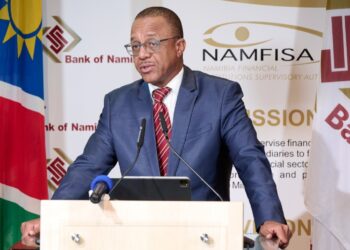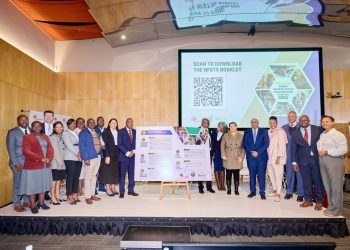
The Development Bank of Namibia (DBN) has to date funded renewable projects in the country valued at N$1.231 billion.
This comes as the development bank provided N$193 million to Anirep Aussenkjerr Solar One to finance the construction of the 20MW Khan solar plant.
The company is made up of two local partner companies, Namibian Stock Exchange listed Alpha Namibia Industries Renewable Power Limited (ANIREP) and Aussenkjer Energy Investments.
The Khan solar plant located 40 km from Usakos, which has a 25 year off-take agreement with NamPower, offering a tariff of 49.05 cents per kWh with fixed escalation of power annually, is being built at a cost of N$300 million, to be funded through a combination of debt and equity.
The Khan Solar plant construction is expected to be completed in March 2023, and subsequent commissioning by May 18 the following year.
DBN’s Head of Marketing and Corporate Communication, Jerome Mutumba, said the Bank’s funding of renewable projects was aimed at reducing the country’s over reliance on imported power.
“According to National Statistics Agency (NSA) figures for February 2022, local production of electricity stood at 65 362 but imports from the Southern Africa Power Pool stood at 255 286 MWh. These figures are a snapshot of the current need to substitute imports. That viewed over the short, medium and long-term local generation is highly variable due to the fact that Namibia’s largest power generation facility, Ruacana Hydroelectric Power Station is dependent on fluctuating levels of the Kunene River.In July 2021, power production from Ruacana Hydroelectric Power Station fell by 87.5%,†he said.
Mutumba said the country not only needs to develop local power generation, but also to create stable sources of generation, such as solar.
“Fluctuation in generation leads to fluctuations in costs which have an impact on Namibia’s deficit as well as on the medium to long-term costs of industry as NamPower and regional distributors have to adjust their costs. By stabilising power generation, Namibia can become a more attractive destination for investors seeking opportunities in Namibian industrialization,†he said.
Commenting on the topic of privately-owned solar generation facilities, Mutumba urged interested stakeholders to approach the Bank to examine business models and potential for future projects.
“Independent power producers (IPPs) are an ideal means to promote economic inclusiveness. Currently, a small solar power plant can conceivably be financed over a period of 10 years. With an offtake agreement of 20 to 25 years and a stable purchasing regime over an additional 10 to 15 years, this leaves an enterprise resource that can be maintained, expanded or diversified,†he said.
The solar plant will be developed by HopSol Africa, also a local company.
Out of 170MW PV power plants in Namibia, ANIREP’s subsidiary HopSol Africa has been involved in the construction of 120MW.
Namibia is a net importer of electricity from South Africa and the Southern African Power Pool (SAPP). In December 2021, the country generated 89,054 Megawatt hours (MWh) but had to import 263,899 MWh.











